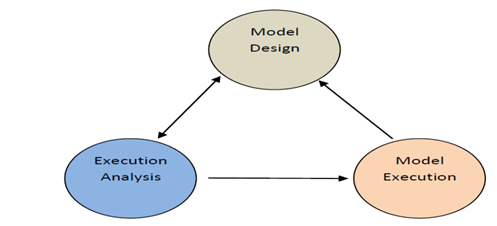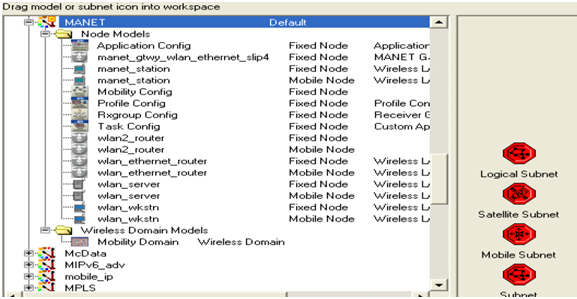Introduction:
The main concentration in this Group mobility impact over TCP and CBR traffic in mobile ad hoc networks is applied towards the actual design explanation that is used for the simulation of this project. The settings required for the simulation and the number of mobile nodes taken for the simulation procedure for estimating the performance of TCP traffic over CBR traffic. The simulation setup required for the project needs few mobile nodes and few attributes and this chapter covers a brief discussion on the attributes required and number of nodes needed.The further section of this project explains the research problem that is considered in the simulation and project and the solution for addressing the research problem with detailed study.OPNET modeler is used for the simulation of this project as it provides several benefits and facilities. The sub-sections of this chapter also discuss the facilities and benefits provided by OPNET at the time of simulating the scenarios using different routing protocols of MANETs.
Simulation tool implemented:
OPNET modeler is used as the simulation tool in this Seminar Paper for simulating the application as it is also discussed earlier. The significant aim of this project is comparing the TCP traffic performance over the CBR traffic performance using different routing protocols across the MANETs. OPNET modeler supports several models of MANETs and also supports all types of routing protocols that are the proactive routing protocols, reactive routing protocols and hybrid routing protocols. The simulation procedure of this Group mobility project includes eight scenarios for achieving the aim of the project. In order to achieve the results needed, a group of programs that are defined are executed at futile environments and this is in general called as a model. The following flow diagram explains the execution of the model.
Fig: Simulation model
The OPNET modeler offers the required communication model for the application of the Seminar Paper and even several technologies are supported by the OPNET modeler and they are the wireless and wired networks, architectures and protocols. The corresponding simulations implemented for evaluating the performances of traffic sources is also are also supported by the OPNET modeler.OPNET modeler also supports the large extent of models and technologies and some of those models and technologies are Mobile Adhoc Networks, UMTS, Wireless sensor networks, designs of optical network and Wi-Fi are the models and ATM, IPV4 and MPLS are the core technologies.The functionality of OPNET is divided into four significant steps and they are “creation of a network or modeling”, “statistics setting”, “simulation execution” and “results evaluation and results comparison”.
These four steps are very significant in the simulation procedure of the application and also for estimating the traffic performance and their comparison using various performance metrics and all this is based on the requirements of the user. The next chapter clearly explains these four steps during the simulation procedure.The OPNET software can be installed in the computer by making some settings required and the requirements needed are represented in the “system requirement section” of the Appendix. OPNET provides a MANET model which is very simple and the simulation of this project is done using some example projects of MANET model to support the current application simulation.
An object palette is provided by using MANET model in the process of project development and the objects required for the simulation procedure are available in the object palette, the user can drag the objects needed from the object palette and drop them on the work station. The objects selected from the object palette also needs some attribute setting and all that is done by the model. The following figure shows the view of an object palette which contains tools:
Fig: MANET Object Palette
The Object Palette of the MANET contains different types of nodes as shown in the figure above, they may be fixed nodes or mobile nodes and even the MANET work stations provided by the object palette are of two types fixed stations and mobile stations. The object palette also provides the wireless LAN work stations and these are also of two types of mobile stations and fixed stations. The object palette also contains the objects like profile config, application config, mobile config, routers and Ethernet routers etc. based on the requirement of the simulation procedure the objects from the object palette are used in order to configure these settings.
This paper is written and submitted by Sujana Priya V.


